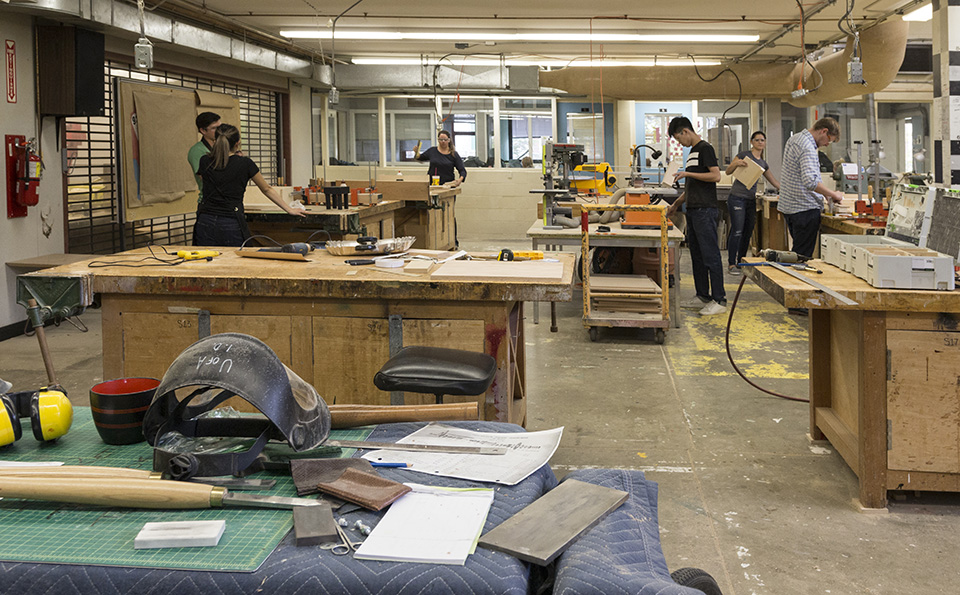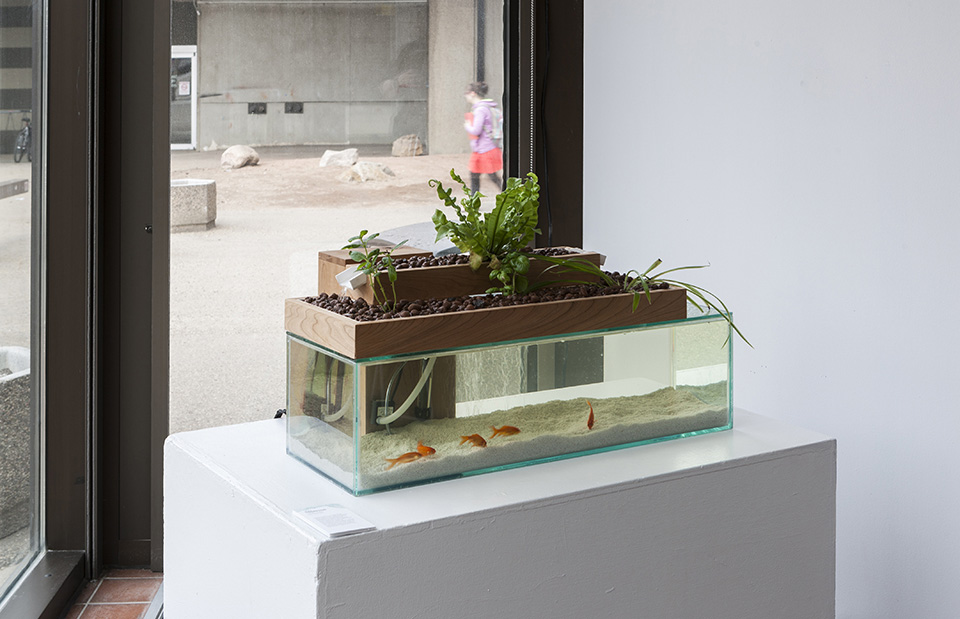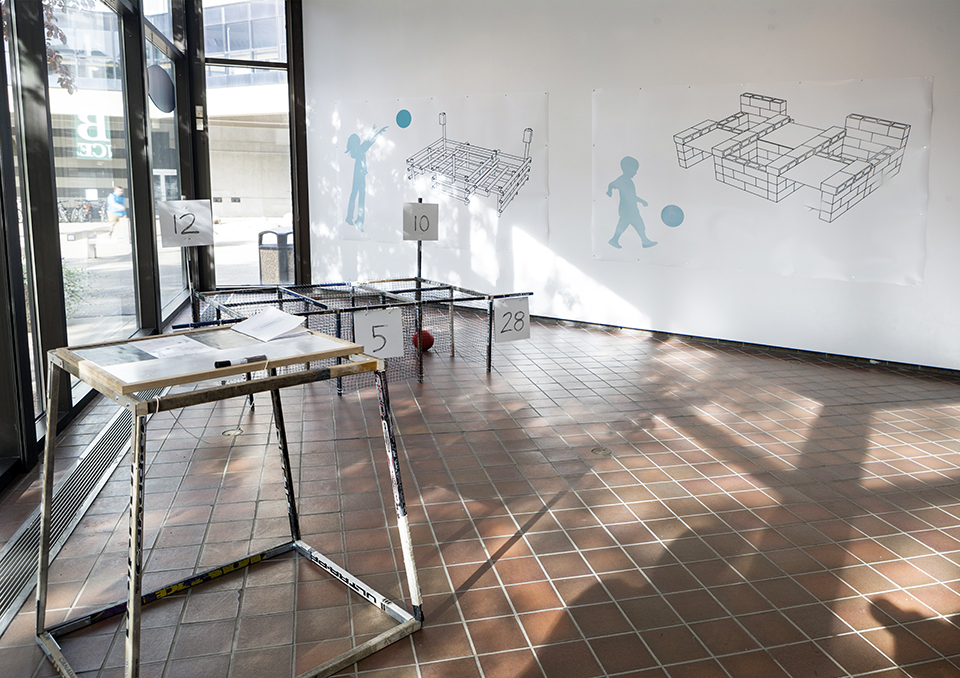Industrial Design
Good design makes the world a better place
Society's needs inspire designers to innovate. Designers analyze society's needs and create solutions that shape how our world looks and functions. Our Industrial Design program prepares you to create objects and services that inform, entertain, educate and work towards improving people's health and well-being.
In our four-year Bachelor of Design (BDes) program, you'll learn to create and use sketches, models and images—in strategic and sophisticated ways—to communicate ideas and information in products as diverse as electronic packaging, furniture, medical products, branding/visual identity packages, signage, apps, trade show and museum displays.
The imagination and creativity of designers touches almost every object in our lives-from the chair we sit on to the cars we drive.
Industrial Designers create concepts and translate them in to visual form-by sketches, models and then through computer software—to communicate and create products that engage, inform, educate, entertain and inspire people. They create layouts or electronic displays and coordinate production and implementation of their designs.
Your Studies
- Industrial Design
- 2D Sketching
- 3D Sketch Modeling
- Prototyping
- CAD Drawing
- CAD Rendering
- Rapid Prototyping (3D printing, CNC)
- Product System
- Photography
- Research and Theory
- Contemporary Design Issues
- Design Management
- Design Practicum (practical work experience)
Careers
- Design Studio
- Architectural Office
- Domestic and/or Contract Furniture Manufacturing
- Medical Products
- Surgical Simulation Planning
- Product Design
- Sports Product Design
- App Designer/Developer
- Game Designer/Developer
- Cultural Sector: Art Gallery, Museum, Theatre, etc.
- Film/TV/Video Production Company
Undergraduate Studies
Our Design Route system is unique in Canada
You can focus your program, according to your specific areas of interest, by choosing one of our Bachelor of Design Routes: Business and Marketing, Social Sciences, Engineering, Computing Sciences, Printmaking or the General Route. This route system gives you the opportunity to gain specific critical skills and knowledge that meet particular demands of the current economy.
Your first year courses, common to all students in the BDes Program, will introduce you to the fundamental concepts of visual art and design practice and history. In studio courses you'll develop skills in drawing, the use of colour and two and three-dimensional studies. Courses in the History of Art, Design and Visual Culture show and analyze specific works of art and design in relation to their historical and social contexts. After completing your first year, you may choose to focus your studies in Visual Communication Design or Industrial Design, or you can continue to take courses in both disciplines. During the senior years of your program, you will have opportunity to work on projects with clients and undertake a practicum (internship) and gain design experience in a real world setting.
Your design studies will teach you technical skills, how to think critically and how to visualize your ideas and bring them to life. Our program is guaranteed to stimulate your intellectual and creative growth. You'll develop advanced thought processes and conceptual skills and you'll discover the relationship between design and the ethical responsibilities associated with being a design professional.
Our class sizes allow instructors to get to know their students-their abilities and strengths-and to give them a substantial amount of individualized attention. Students also get to know each other well and build long-term relationships and friendships that sometimes translate in to business partnerships and professional relationships later on.
Throughout your BDes degree, you will have opportunities to engage in projects with members of local communities, organizations and businesses. You also have opportunities to participate in design studies trips, international exchanges and study abroad. Our Student Design Association organizes both local, national and sometimes international shows where you can display your designs and network with potential employers.
Graduate Studies
Our MDes degree program provides advanced studies in Industrial Design (and Visual Communication Design) in the division of Design Studies. Our approach is interdisciplinary and our purpose is to equip graduates with advanced design methods that prepare them to face new problems in effective, meaningful and appropriate ways. Facilities and equipment in Industrial design and Visual Communication Design include current technologies and large studio spaces and offices. Graduate students benefit from high contact and supervision time with a variety of academics in the Department of Art & Design as well as across the University as a whole.
- Custom Sit-Ski (skiing apparatus for persons with lower limb disabilities)
- The Social Object (examination of the role of interior objects and their interaction with users)
- Innovation, Technology, Design (refocusing product creation on user empowerment)
- Medical Modeling (development of a 3D printed rhinoplasty model for teaching plastic surgeons)
- Motivational Adherence (development of a strategy for weight reducing app)
During your first year of study, you will work under the guidance of several Design Studies Professors on a number of projects. Upon completion of your first year course work, you'll begin your thesis project. The development of your thesis may take between one and two years, depending on the nature and complexity of the project. Your thesis project allows you to develop advanced research and working methods and make to contribution through the outcomes to your chosen field of design. Normally, the thesis includes a design product/outcome and a written document that articulates the research undertaken and contextualizes the work.
Facilities
Industrial Design (ID) students work in classrooms, a large common space and studios/labs that feature design and prototyping technologies. Prototyping activities are supported by a large workshop that has numerous machines that can process and develop your ideas. We also have 3D printers and a CNC router to process your CAD designs. An Apple Mac computer lab provides multiple stations equipped with industry-standard design software and tablets for digital and interactive design. Large format digital printing is available on campus. Graduate students have access to all ID facilities, as well as individual computer work stations in a shared graduate studio space.
University of Alberta's excellent library system helps you stay informed about current issues in art and design. Various collections of prints and rare books are also available for thesis project research in addition to the vast, interdisciplinary resources of the University.
The Fine Arts Building (FAB) Gallery provides both undergraduate and graduate students a professionally-run exhibition space to display work and to see work by other prominent artists and designers.
Highlights
We are the only university in Canada to have a Canada Research Chair in Design Studies. This is an exceptional asset to our program.
Undergraduate students can undertake internships with design studios and organizations-locally or abroad-to gain valuable experience and design expertise. Research opportunities are incorporated into the curriculum at both undergraduate and graduate levels.
Our graduate students are highly active in the University, local, national and international communities. They attend conferences and symposia in Canada and abroad. Some are (or become) members of the Society of Graphic Designers of Canada, which connects them to ico-D, the International Council of Design, The Industrial Designers Society of America (IDSA) Association Canadian Industrial Designers (ACID). The University environment provides access to enormous resources, expertise and, therefore, to incredible opportunities for interdisciplinary research and collaborative work. Your graduate studies can be enriched by international travel and connections you make at events and conferences abroad.
Design Studies offers innovative interdisciplinary programs supported by excellent teaching by internationally recognized faculty members, quality facilities, technical staff and infrastructure. Field trips, travel courses and internships can enrich your graduate experience. ID faculty are involved in Medical Design, Creative Economy Research, Social Indigenous Design interactions, Design Education, Assistive Devices Design, Human Factors and Ergonomics, Design for an Aging Population, Design Theory, Critical Design, and Furniture Design.




